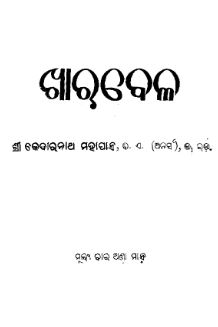Kharavela, also written as Khraba, was a king of Kalinga in what is now the Indian state of Odisha who reigned in the second or first century BCE. His rock-cut Hathigumpha inscription serves as Kharavela’s main source of information. The undated inscription has 17 lines, only four of which are clearly readable, while the remaining lines have different interpretations and are up for debate among experts. His rule is chronicled year by year in the inscription, which panegyrically praises him for his support of the arts, public infrastructure initiatives, social work, and several military successes. It is widely acknowledged by historians to be the greatest and most comprehensive biography of Kharavela. He adhered to the Jain religion.
As per Kulke and Rothermund According to Kharavela’s empire, the history of ancient India, including the eras after Ashoka and Kharavela, is murky. They conclude that the Kharavela empire probably fell apart quickly after his demise given the absence of significant inscriptions by his successors. The minor inscriptions at Udayagiri provide some information on the next two generations of rulers, Vakradeva (also known as Kudepasiri or Vakadepa) and Vadukha. King members of the Sada dynasty succeeded Kharavela. A Mahameghavahana monarch named Siri Sada is described in an inscription at Guntupalli.He is referred to as a Chakravartin or an emperor in Kharavela’s inscriptions.He was one of the most powerful kings in Kalinga.
Books Info
| Books name | Kharabela / ଖାରବେଳ |
| Author | Kedara Natha Mahapatra |
| No Of pages | 10 |
| Publisher | Student’s Store |
| Publication | 1941 |
| Printed At | Satyabadi Press |
| Distributor | NA |

